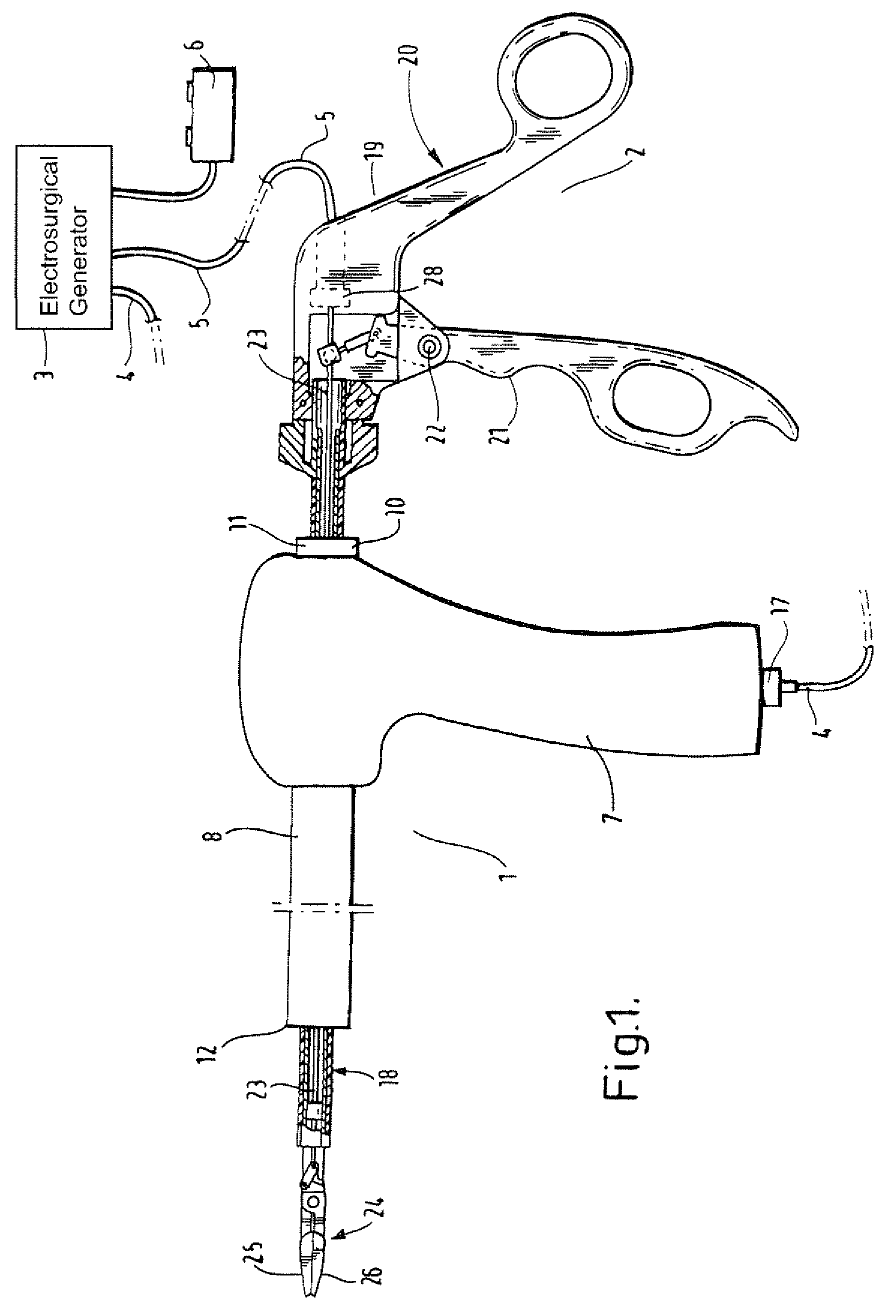Surgical instrument
a surgical instrument and electrode technology, applied in the field of instruments, can solve the problems of increasing the complexity of the instrument, and achieve the effect of reducing the rate at which the rest of the instrument increases in temperature and effective separation of tissu
- Summary
- Abstract
- Description
- Claims
- Application Information
AI Technical Summary
Benefits of technology
Problems solved by technology
Method used
Image
Examples
Embodiment Construction
[0032]Referring to FIG. 1, a morcellating system comprises a morcellating device shown generally at 1, a tissue-pulling device shown generally at 2, and an electrosurgical generator 3. The generator 3 is connected to the morcellating device 1 by means of cable 4, and to the tissue-pulling device 2 by means of cable 5. The generator 3 is controlled by means of footswitch 6.
[0033]As shown in FIGS. 1 and 2, the morcellating device 1 comprises a handle 7 and a cylindrical tube 8. The cylindrical tube 8 is hollow, and defines a lumen 9 therein. The proximal end 10 of the tube 8 extends from the handle 7 as shown at 11, and the distal end 12 of the tube is provided with an electrosurgical electrode assembly 13. The electrosurgical electrode assembly 13 comprises an active tissue-cutting electrode 14, and an insulation member 15, both extending around the circumference of the tube 8. The insulation member 15 separates the electrode 14 from the remainder of the tube 8, which acts as a retur...
PUM
 Login to View More
Login to View More Abstract
Description
Claims
Application Information
 Login to View More
Login to View More - R&D
- Intellectual Property
- Life Sciences
- Materials
- Tech Scout
- Unparalleled Data Quality
- Higher Quality Content
- 60% Fewer Hallucinations
Browse by: Latest US Patents, China's latest patents, Technical Efficacy Thesaurus, Application Domain, Technology Topic, Popular Technical Reports.
© 2025 PatSnap. All rights reserved.Legal|Privacy policy|Modern Slavery Act Transparency Statement|Sitemap|About US| Contact US: help@patsnap.com



